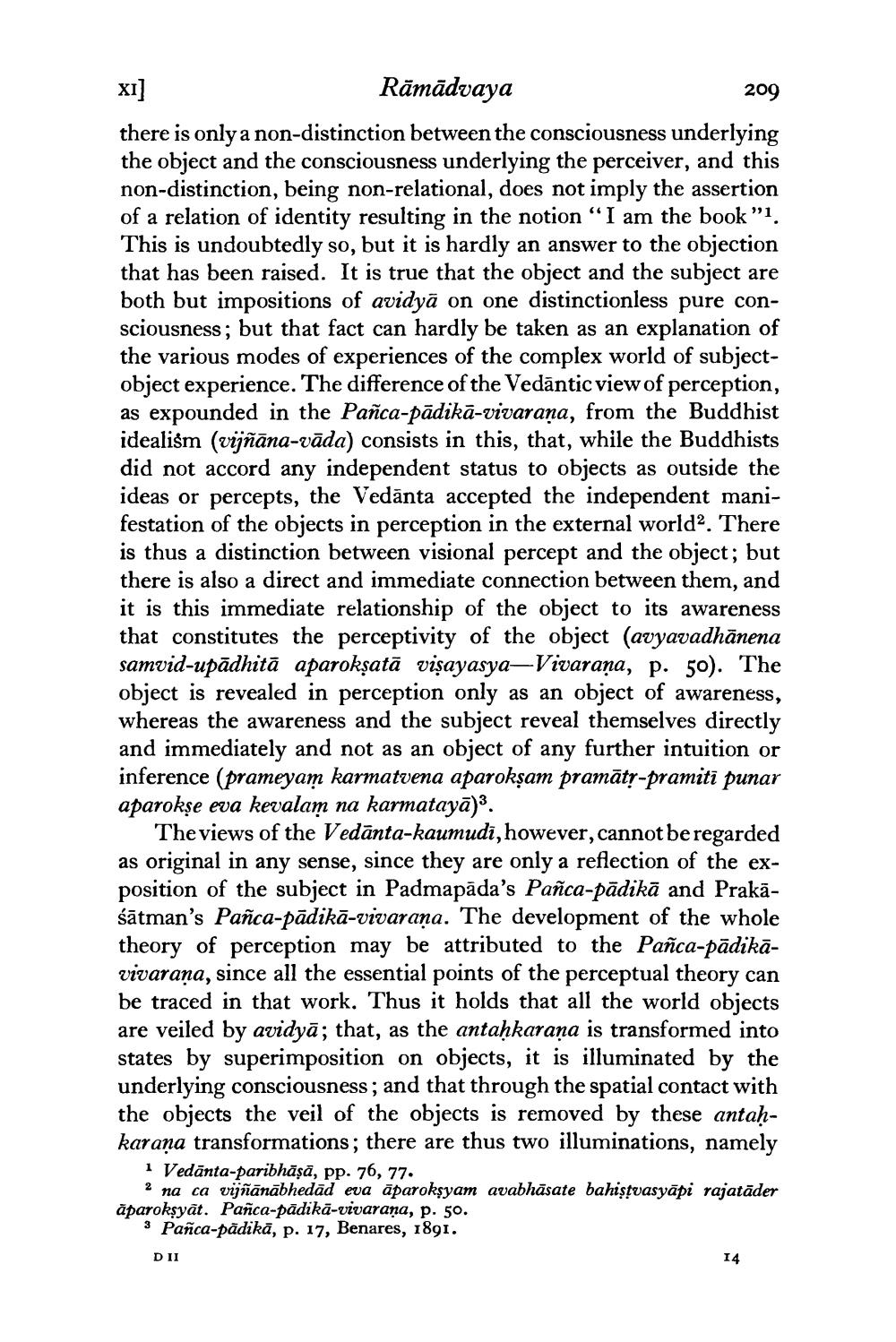________________
209
XI
Rāmādvaya there is only a non-distinction between the consciousness underlying the object and the consciousness underlying the perceiver, and this non-distinction, being non-relational, does not imply the assertion of a relation of identity resulting in the notion “I am the book "1. This is undoubtedly so, but it is hardly an answer to the objection that has been raised. It is true that the object and the subject are both but impositions of avidyā on one distinctionless pure consciousness; but that fact can hardly be taken as an explanation of the various modes of experiences of the complex world of subjectobject experience. The difference of the Vedāntic view of perception, as expounded in the Pañca-pădikā-vivaraña, from the Buddhist idealism (vijñāna-vāda) consists in this, that, while the Buddhists did not accord any independent status to objects as outside the ideas or percepts, the Vedānta accepted the independent manifestation of the objects in perception in the external world. There is thus a distinction between visional percept and the object; but there is also a direct and immediate connection between them, and it is this immediate relationship of the object to its awareness that constitutes the perceptivity of the object (avyavadhānena samvid-upādhitā aparokșatā visayasya—Vivarana, p. 50). The object is revealed in perception only as an object of awareness, whereas the awareness and the subject reveal themselves directly and immediately and not as an object of any further intuition or inference (prameyam karmatvena aparokşam pramāty-pramitī punar aparokşe eva kevalam na karmatayā)3.
The views of the Vedānta-kaumudi, however, cannot be regarded as original in any sense, since they are only a reflection of the exposition of the subject in Padmapāda's Pañca-pădikā and Prakāśātman's Pañca-pădikā-vivaraņa. The development of the whole theory of perception may be attributed to the Pañca-pădikāvivarana, since all the essential points of the perceptual theory can be traced in that work. Thus it holds that all the world objects are veiled by avidyā; that, as the antaḥkaraṇa is transformed into states by superimposition on objects, it is illuminated by the underlying consciousness; and that through the spatial contact with the objects the veil of the objects is removed by these antaḥkaraņa transformations; there are thus two illuminations, namely
1 Vedānta-paribhāṣā, pp. 76, 77.
2 na ca vijñānābhedād eva āparoksyam avabhāsate bahiştvasyāpi rajatāder ăparoksyāt. Pañca-pădikā-vivarana, p. 50.
3 Pañca-pădikā, p. 17, Benares, 1891.
DII
14




